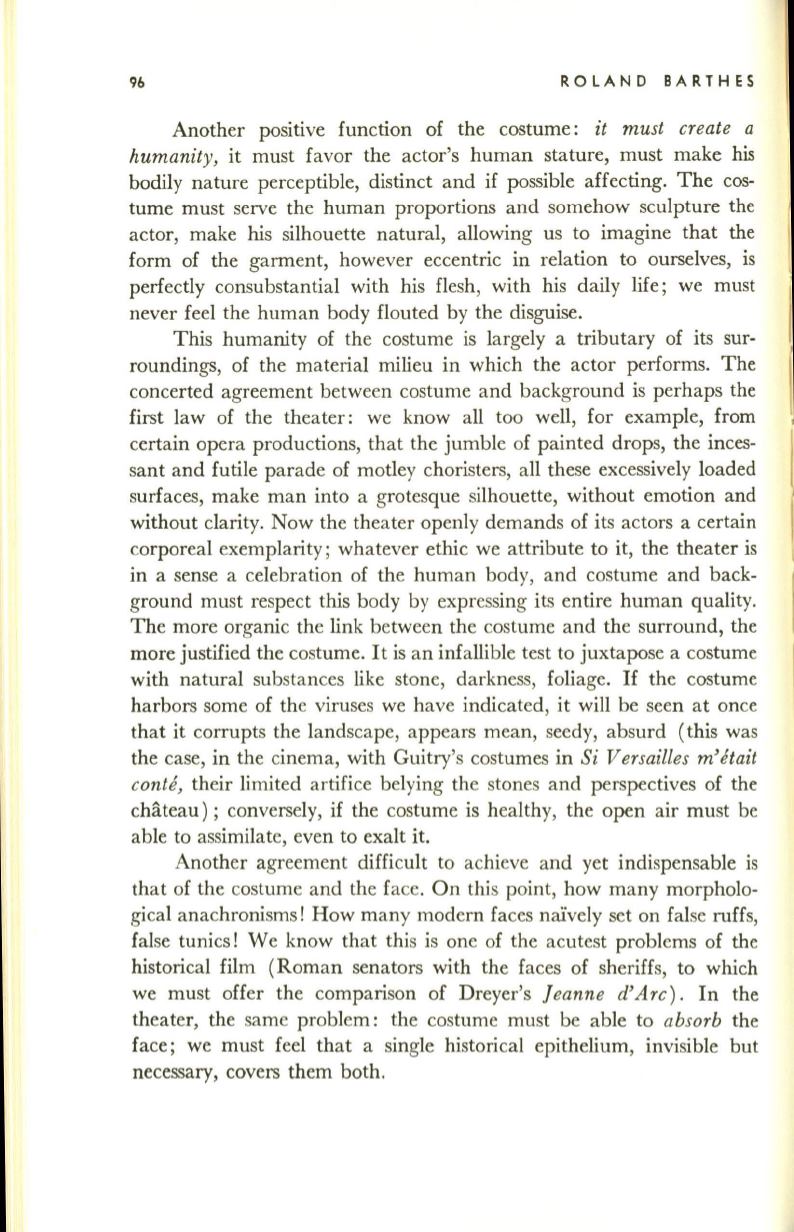
96
ROLAND BARTHES
Another positive function of the costume:
it must create a
humanity,
it must favor the actor's human stature, must make
his
bodily nature perceptible, distinct and if possible affecting. The cos–
tume must serve the human proportions and somehow sculpture the
actor, make his silhouette natural, allowing us to imagine that the
form of the garment, however eccentric in relation to ourselves, is
perfectly consubstantial with his flesh, with his daily life; we must
never feel the human body flouted by the disguise.
This humanity of the costume is largely a tributary of its sur–
roundings, of the material milieu in which the actor performs. The
concerted agreement between costume and background is perhaps the
first law of the theater: we know all too well, for example, from
certain opera productions, that the jumble of painted drops, the inces–
sant and futile parade of motley choristers, all these excessively loaded
surfaces, make man into a grotesque silhouette, without emotion and
without clarity. Now the theater openly demands of its actors a certain
corporeal exemplarity; whatever ethic we attribute to it, the theater is
in a sense a celebration of the human body, and costume and back–
ground must respect this body by expressing its entire human quality.
The more organic the link between the costume and the surround, the
more justified the costume. It is an infallible test to juxtapose a costume
with natural substances like stone, darkness, foliage.
If
the costume
harbors some of the viruses we have indicated, it will be seen at once
that it corrupts the landscape, appears mean, seedy, absurd (this was
the case, in the cinema, with Guitry's costumes in
Si Versailles m'etait
conte,
their limited artifice belying the stones and perspectives of the
chateau) ; conversely, if the costume is healthy, the open air must be
able to assimilate, even to exalt it.
Another agreement difficult to achieve and yet indispensable is
that of the costume and the face . On this point, how many morpholo–
gical anachronisms! How many modern faces naively set on false ruffs,
false tunics! We know that this is one of the acutest problems of the
historical film (Roman senators with the faces of sheriffs, to which
we must offer the comparison of Dreyer's
Jeanne d'Arc).
In the
theater, the same problem: the costume must be able to
absorb
the
face; we must feel that a single historical epithelium, invisible but
necessary, covers them both.


